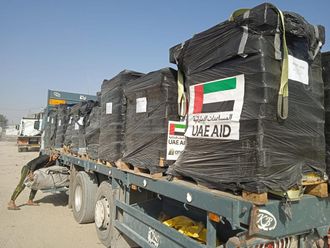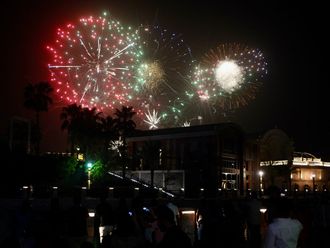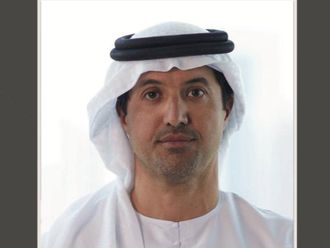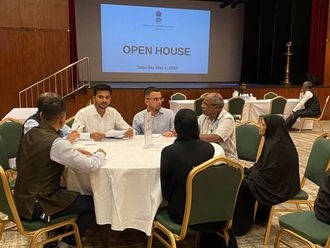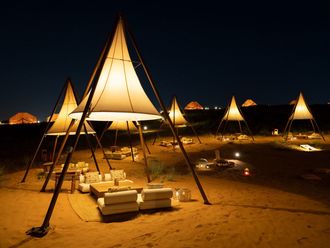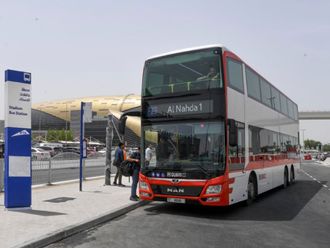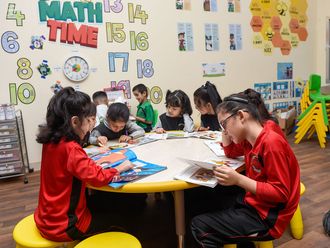Abu Dhabi: The UAE is today the most highly regarded in terms of economic prosperity, governance, and future outlook among the Arab states. The scale of growth in the size of its cities and the pace of construction are unmatched in the region — perhaps even the world, with the exception of China, according to a report by the Institute for Near East and Gulf Military Analysis (INEGMA).
“Rapid economic growth has placed the UAE under the international spotlight as a preferred destination for tourists and investors alike. For many, the level of progress and trajectory the UAE has achieved is difficult to believe given its modest beginnings and its location in a perpetually troubled Middle East. Heavy support for dispute resolution through diplomacy has been a key feature of the international strategy adopted by the UAE, as has confidence-building and dialogue,” said the report: Success of the UAE Defence Strategy: Achievements and Outlook.
However, it added, aware of threats surrounding them, UAE leaders have worked from day one on building national defence against the spectrum of threats to ensure an effective and robust deterrence against hostile forces and actors across the region. As the UAE has assumed a broadened role within the international community over the past few years, the UAE Armed Forces have intensified engagements with international partners and allies across a range of operational activities and interest areas.
The UAE Armed Forces have been recognised for their involvement in humanitarian missions for some time — having supported peacekeeping, humanitarian relief and disaster response efforts in places around the Middle East, South Asia, and Africa since the turn of the century. The UAE Armed Forces now work more closely than ever before with international allies such as the United States, France, and Nato, among others, participating in coalition activities such as the military campaigns in Afghanistan, Libya, and Syria. Indeed, the UAE Armed Forces can be expected to take on more responsibilities within international coalitions (whose formation is increasingly a matter of necessity) as they take shape in order to counter hostile forces and actors around the broader region that today present an increasingly immeasurable threat to international security. These developments are a reflection of the growing professional skillset and capabilities of the UAE Armed Forces, and point to the trust, confidence, and respect that allies of the UAE — many of whom have closely observed the development of UAE military from its modest origins — hold for its forces today.
Few observers would contend with the assertion that the preceding decade has seen the UAE Armed Forces move leaps and bounds ahead. The UAE is looking to build on its achievements to date as it looks to the future and turns its focus on optimising operational performance through the adoption of a network-centric approach and architecture for its armed forces. A network-centric approach delivers a substantial force multiplier effect by enhancing operational efficiency and effectiveness, and reduces quantitative requirements on the force structure. It does this through integrating core capabilities in support of a shared multi-domain information and communications network which can deliver superior situational awareness to commanders and operators, facilitating rapid decision-making in support of the effects-based operational approach (EBOA). Few nations around the world are able to seriously pursue such a transformation but UAE defence strategy puts its military on a course that is comparable to development paths adopted by Nato. As such, the UAE Armed Forces are increasingly well positioned to transform into a networked force, where superior situational awareness and a secure over-the-air communication network will provide the foundations for long range early warning, rapid response, and precision targeting capabilities.
These core capabilities continue to take shape with a multi-intelligence sensor network that will expand with future acquisition and operationalisation of a variety of airborne sensors to support airborne early warning, reconnaissance, and other intelligence-gathering missions, and a strategic satellite programme which will deliver a wide area multi-domain intelligence picture at one layer and offer a secure over-the-air communications network capability for network-centric operations at another. However, transitioning to a network-centric approach for military operations involves multiple complex processes before all else to create the competencies the can enable design, planning, development, and implementation of such a radical transformation.
As a development programme comprising multiple complex processes, the transition to a network-centric architecture is inherently more systemic in its characteristics than the modular architecture it aims to deliver as the endpoint product. Defence strategy always look to the future, keeping an eye on as far as twenty years into the future to inform strategic decision-making today — the UAE strategy for defence does just this with a holistic approach that aims to develop key technical capacities across key stakeholders in the value chain that will act as strategic enablers and carry forward its defence transformation far into the future.
Following a rewarding model that many developed countries around the world have successfully implemented, the UAE has adopted a strategy to fostering growth within as well as between the security establishment, industry, and academic institutions through institutional mechanisms placed strategically in order to provide linkages at multiple layers. In terms of capability, application, and trajectory the UAE is crafting a pathway for sustained defence transformation and capacity-building that has studied and been informed by successes and failures in defence transformation from around the world — made possible by the goodwill in international partnerships that the UAE has built, which continue to provide opportunities for sustained engagement at strategic and technical levels. UAE defence has also come to benefit exceedingly from rising professional standards and technical skills within its ranks, bearing fruit from the development of centres of education and training at home, from the sizable numbers of Emirati officers taking on advanced courses abroad, and especially from regular UAE participation in military exercises with international allies across a range of scenarios and mission types. The transformation and development of the UAE Armed Forces has also benefited enormously from a national leadership that has understood the complex business of defence modernisation so well and provided a sound long-term vision, rationale, and impetus for the UAE to meet its strategic security requirements with a holistic approach.
Within the holistic approach adopted by the UAE, industrial and technical capacity-building to support defence transformation has been a core element. Industrial and technical capacity-building are recognised as essential for long-term development as they provide context to and facilitate the development of a scientific research base, technological innovation, and create employment opportunities for a highly skilled workforce in an economy keenly in the search of diversification opportunities. Using offset programmes and investment opportunities to transfer technologies and technical expertise to the local market have helped facilitate fastpaced growth to the UAE defence industry. The UAE has achieved commendable success in developing a defence industrial base within the country, led at the front by Mubadala, Tawazun, and Emirates Advanced Investments (EAI) groups — the three of which are expected to finalise a merger to create one of the largest and most promising defence, aerospace, and support services conglomerates in the region. A number of other smaller groups such as International Golden Group, Baynunah Group, and ADCOM, reflect the budding industrial base in the UAE and its potential to develop the technical capacities that the country will need for the future.


